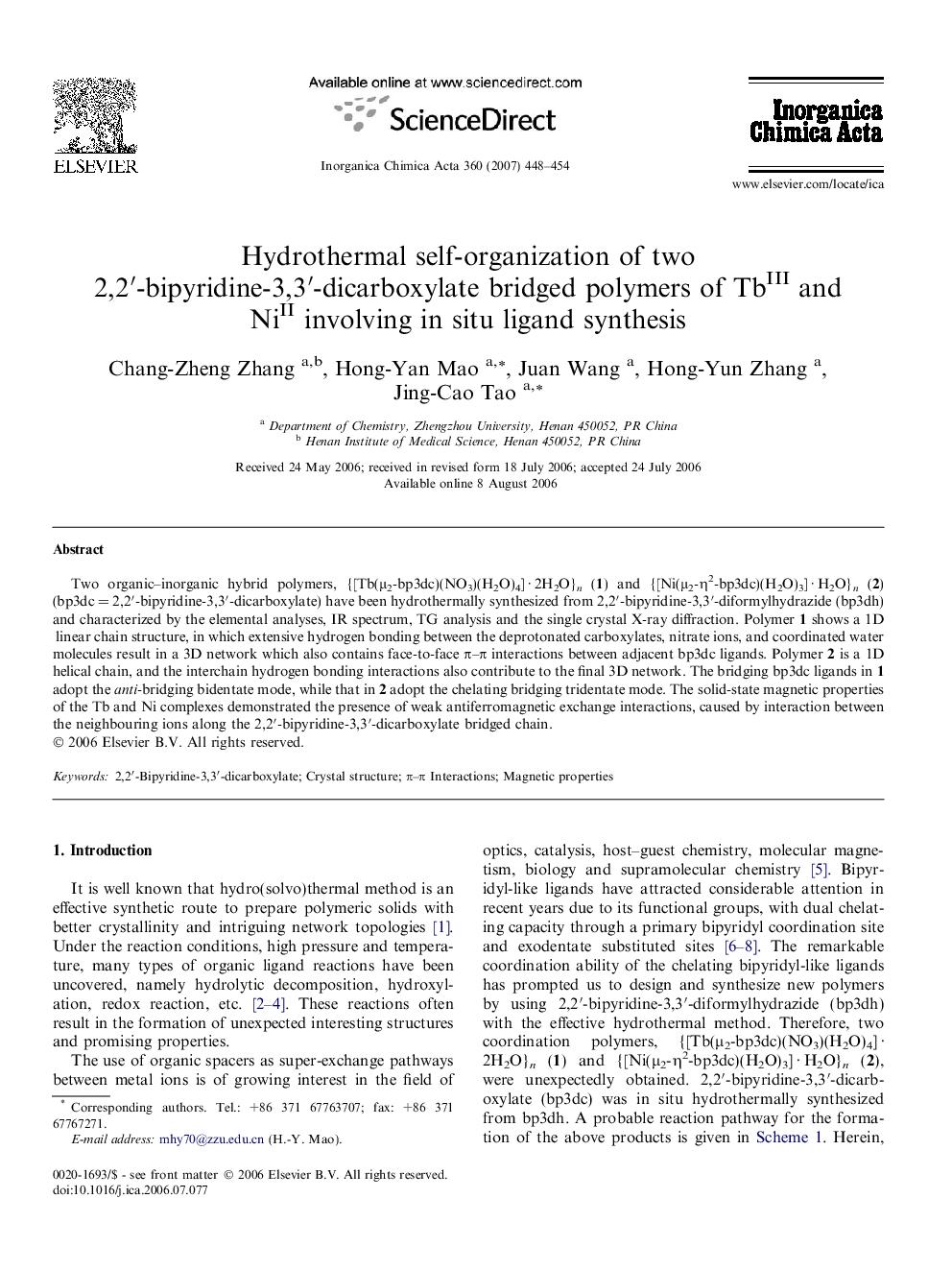| Article ID | Journal | Published Year | Pages | File Type |
|---|---|---|---|---|
| 1310713 | Inorganica Chimica Acta | 2007 | 7 Pages |
Two organic–inorganic hybrid polymers, {[Tb(μ2-bp3dc)(NO3)(H2O)4] · 2H2O}n (1) and {[Ni(μ2-η2-bp3dc)(H2O)3] · H2O}n (2) (bp3dc = 2,2′-bipyridine-3,3′-dicarboxylate) have been hydrothermally synthesized from 2,2′-bipyridine-3,3′-diformylhydrazide (bp3dh) and characterized by the elemental analyses, IR spectrum, TG analysis and the single crystal X-ray diffraction. Polymer 1 shows a 1D linear chain structure, in which extensive hydrogen bonding between the deprotonated carboxylates, nitrate ions, and coordinated water molecules result in a 3D network which also contains face-to-face π–π interactions between adjacent bp3dc ligands. Polymer 2 is a 1D helical chain, and the interchain hydrogen bonding interactions also contribute to the final 3D network. The bridging bp3dc ligands in 1 adopt the anti-bridging bidentate mode, while that in 2 adopt the chelating bridging tridentate mode. The solid-state magnetic properties of the Tb and Ni complexes demonstrated the presence of weak antiferromagnetic exchange interactions, caused by interaction between the neighbouring ions along the 2,2′-bipyridine-3,3′-dicarboxylate bridged chain.
Graphical abstractTwo 2,2′-bipyridine-3,3′-dicarboxylate bridged hybrid polymers of Tb(III) and Ni(II) have been hydrothermally synthesized from 2,2′-bipyridine-3,3′-diformylhydrazide and characterized by the single-crystal X-ray diffraction. Magnetic behaviors indicate the existence of antiferromagnetic interactions.Figure optionsDownload full-size imageDownload as PowerPoint slide
